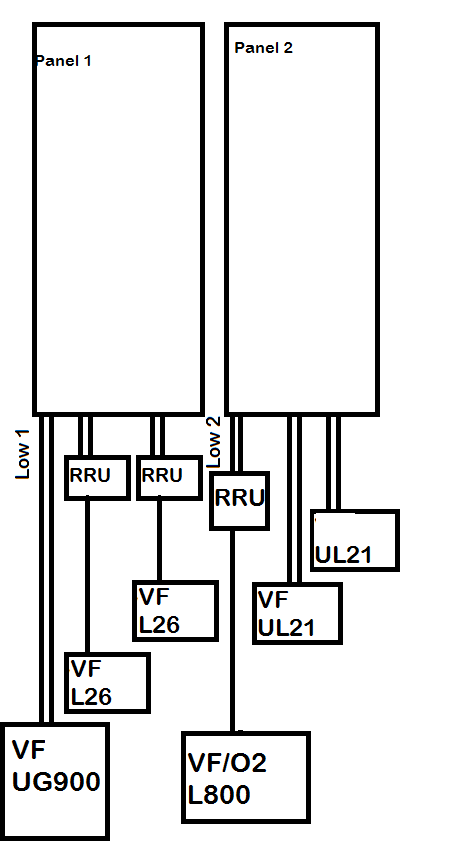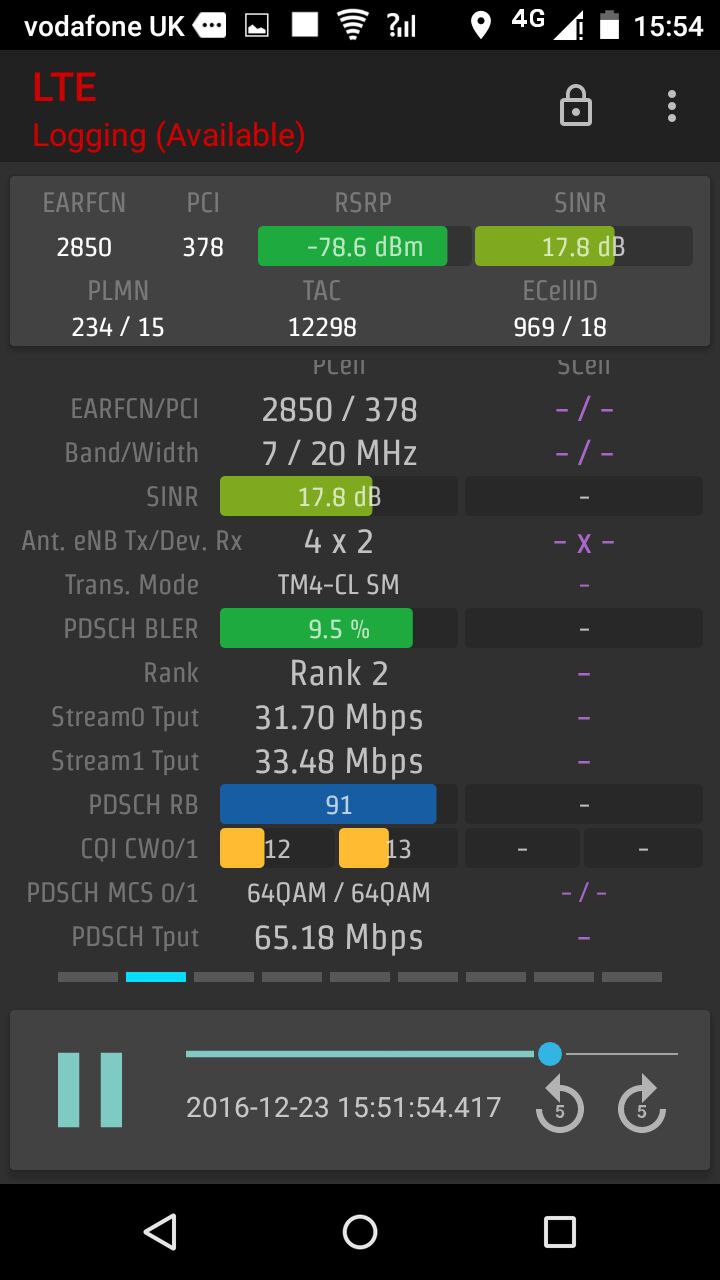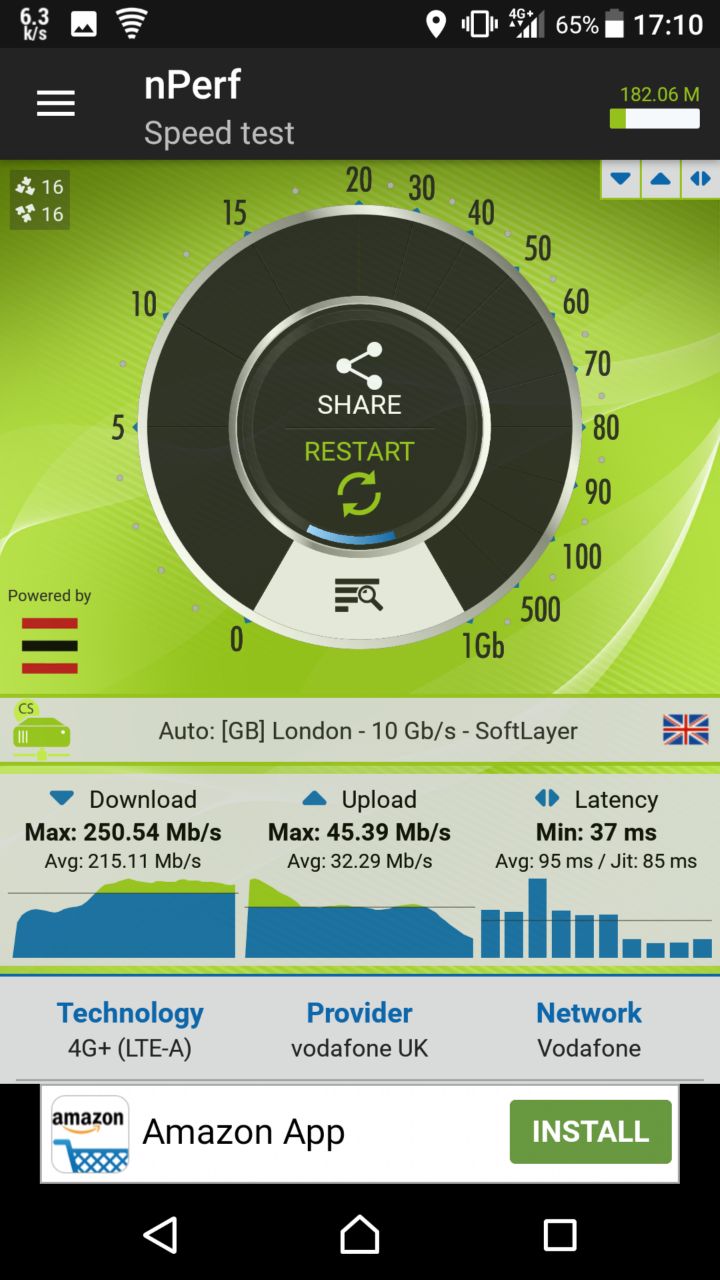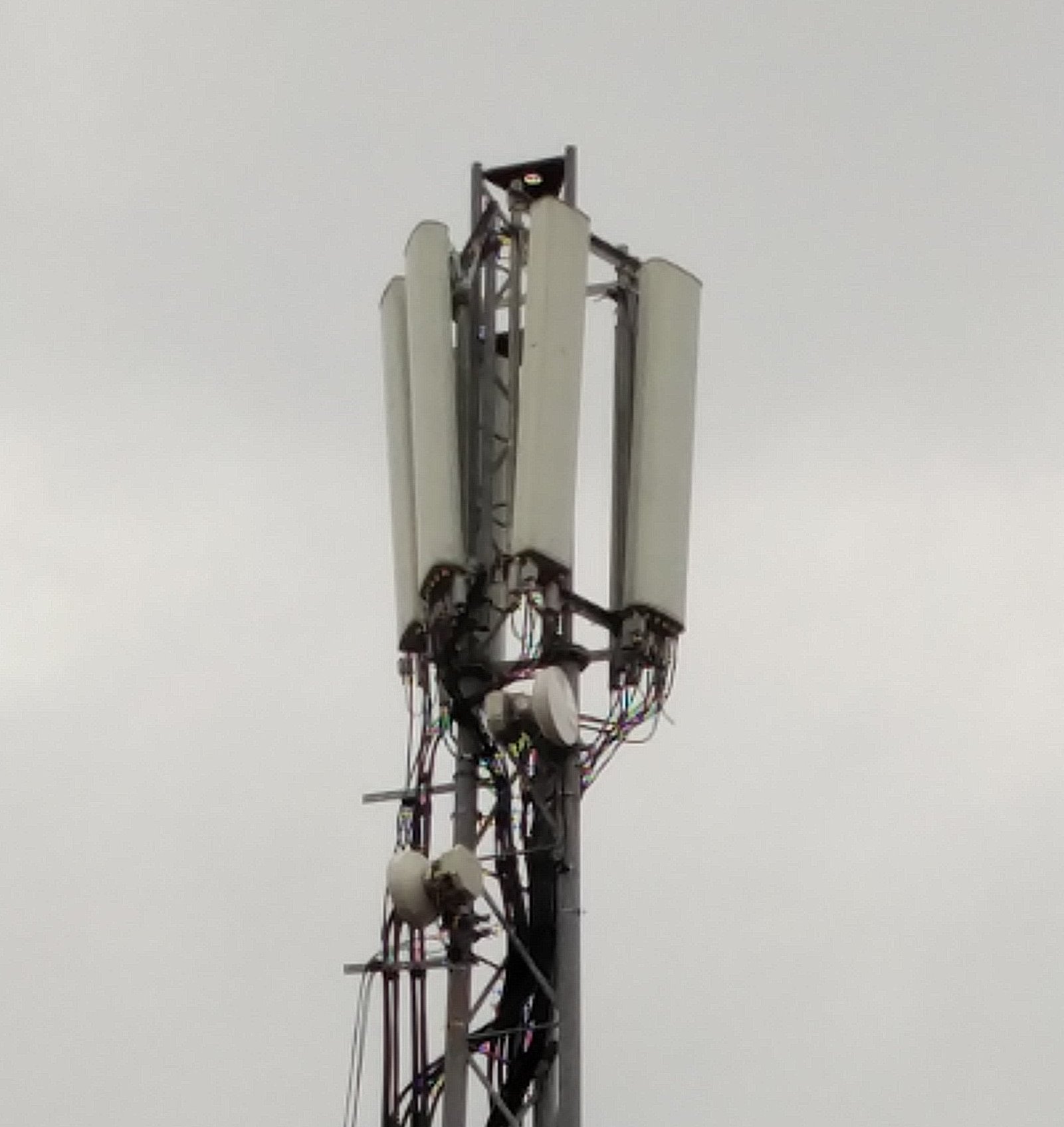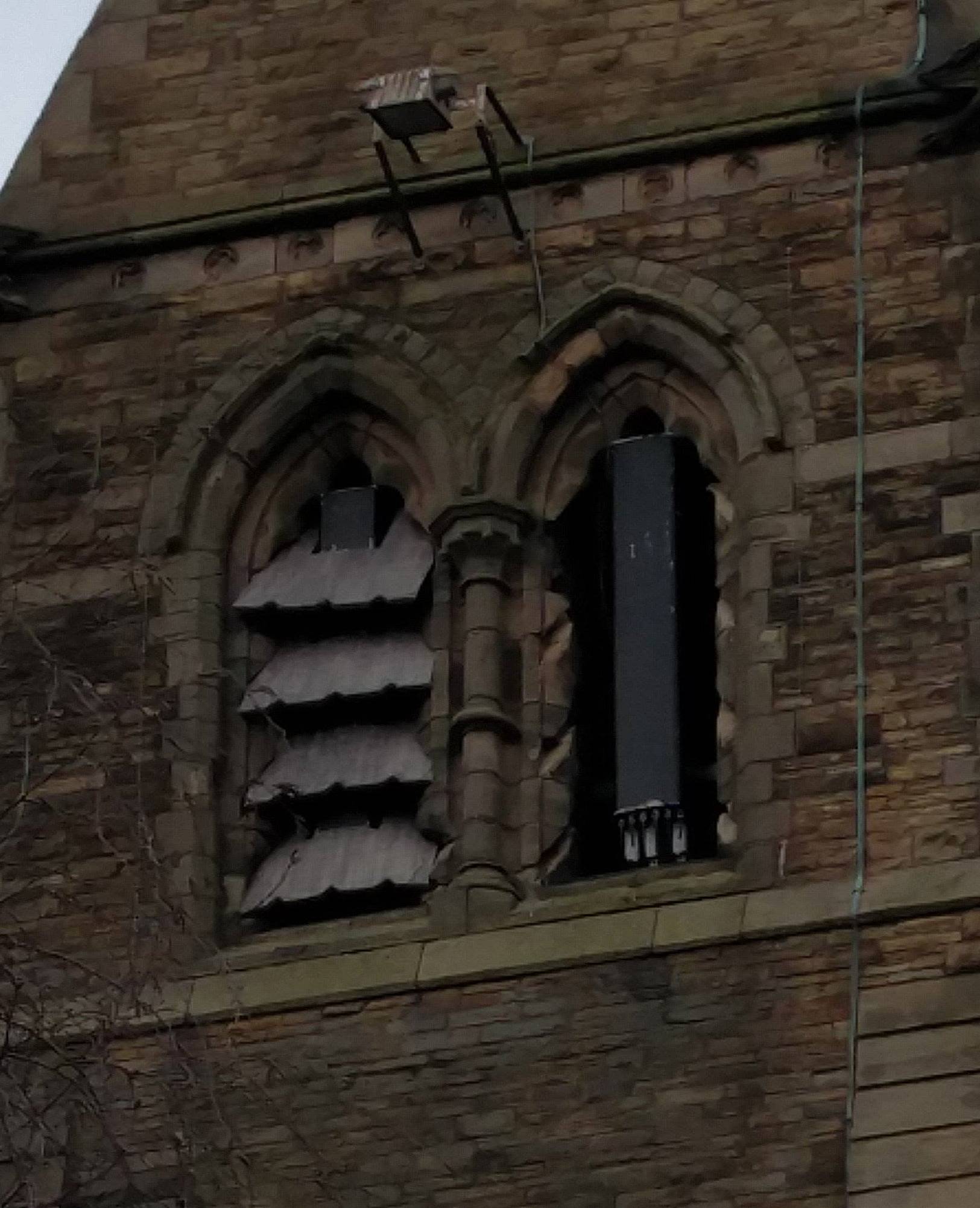An overall image of the site. As this is a London region site, O2 and Vodafone have separate 2G and 3G services. The lower stack of panels is for O2 UG09, U21 and the upper antennas are for Vodafone's UG09, UL21, L26 and shared L08.
A closeup of the Vodafone antenna array, where two Argus antennas (Commscope Argus CVVPX304R3 or equivalent) are used on each sector. An Ericsson RRUS32 4T4R RRU provides the Band 7 4G, an RRUS12 for Band 1 3G/4G and an RRUS12 for B20 4G.
